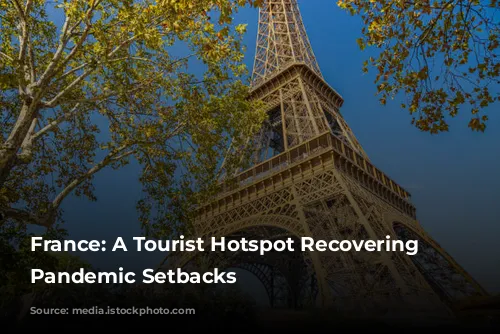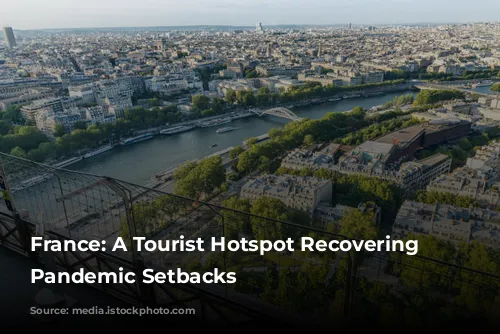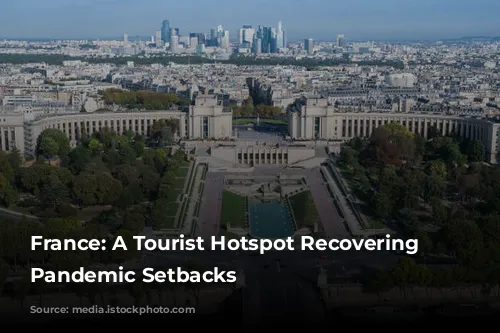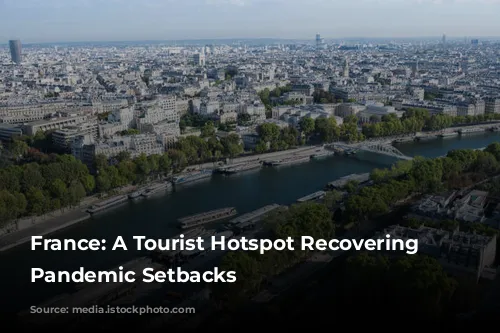The global pandemic in 2020 brought the vibrant travel and tourism industry to a standstill, especially in France, which suffered the third highest tourism loss worldwide, behind Spain and the U.S. Tourism in France plummeted by a staggering 41%, leading to a shortfall of €61 billion, approximately $74.6 billion.
The pandemic dealt a significant blow to the French economy, with the tourism sector’s contribution to the GDP dropping by €103 billion in 2020, compared to 2019. The impact was widespread, with over 700,000 direct jobs affected, and inbound tourists spending nearly 50% less in 2020 compared to the previous year.
Paris, the City of Lights, was hit hardest, experiencing a €23.1 billion drop in tourism revenue. Other regions like Ile de France, Auvergne-Rhone-Alpes, and Provence-Alpes-Cote d’Azur also suffered significant revenue losses. The pandemic also had a ripple effect on outbound travel, with French travelers taking approximately 70% fewer trips in 2020 compared to 2019. The downturn affected business travel the most, with a staggering 80% reduction in business trips.

France’s Tourism Renaissance: A Strong Comeback
Despite the challenging times, France’s tourism industry is on the path to recovery. In the first quarter of 2023, tourism in France grew by 12.3%, signaling a strong rebound. Hotel stays increased by nearly 7 million in the first quarter of 2023, reaching 42.6 million, up from 35.7 million in the first quarter of 2022.
The increase in hotel occupancy was particularly notable in upscale luxury hotels, with a 31.4% rise in bookings. In contrast, lower-cost accommodation saw a slight dip in bookings by 2.7%. The comeback of tourism in France is also reflected in the growing tourism revenues, which reached 5489 million euros in April 2023, up from 3945 million euros in March 2023.

France: A Magnet for Travelers
France boasts numerous captivating attractions that draw visitors from all corners of the globe, making it a highly sought-after travel destination. Disneyland Paris, with over 15 million visitors annually, and the iconic Notre Dame Cathedral, attracting 13 million visitors, are just two examples of France’s alluring landmarks.
The allure of France extends beyond its iconic monuments and theme parks. Its rich culture, charming villages, breathtaking landscapes, and world-renowned cuisine contribute to its global appeal. French language, the second most learned language globally, spoken by 274 million people, further adds to the country’s cultural influence.

France: A Tourism Powerhouse
The global number of tourists visiting France has more than doubled in the past 15 years, highlighting the country’s enduring popularity as a travel destination. In 2017, France welcomed a record 207.3 million international arrivals, including both day visitors and overnight guests.
France’s tourism sector is a significant contributor to its economy, with the country aiming to attract 100 million foreign tourists by 2020. Europeans make up the largest share of foreign tourists, accounting for 79% of the total, with the United Kingdom topping the list with 12.7 million visitors in 2017.
Despite a decline in hotel and hostel stays in the first quarter of 2019, potentially due to the yellow vest protests, the French government reported an increase in tourist revenues in January and February 2019, demonstrating the resilience of the industry.
France’s tourism sector continues to be a powerhouse, attracting visitors from around the world with its rich cultural heritage, breathtaking landscapes, and world-class attractions.









